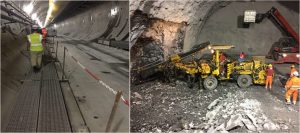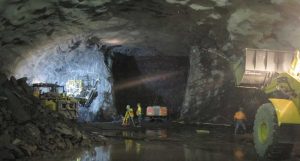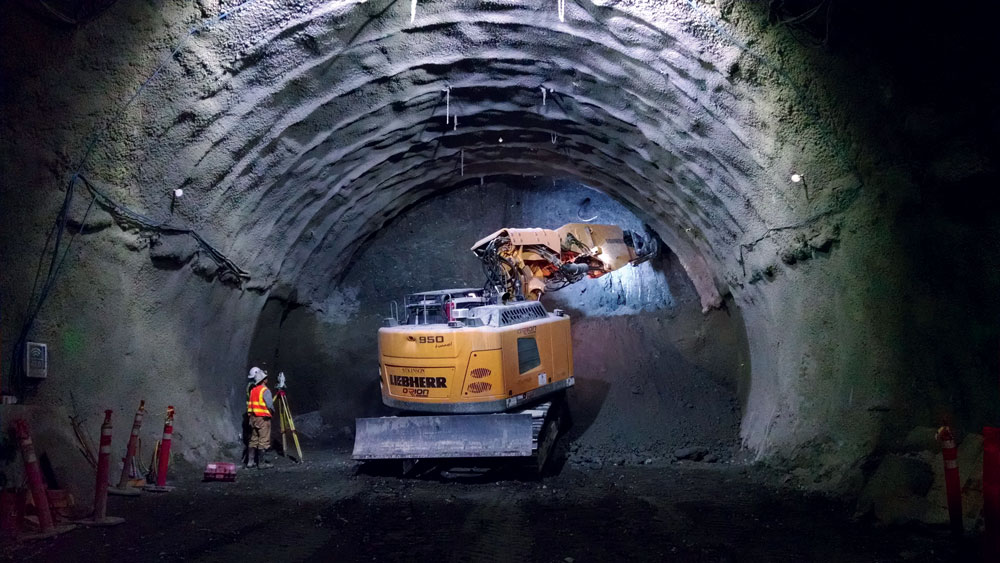The Drill and Blast Tunneling Method: A Comprehensive Guide
Tunneling is a fascinating and crucial aspect of civil engineering and construction. One of the most traditional yet effective methods for excavating tunnels is the “Drill and Blast” tunneling method. In this article, we will delve into the details of this method, exploring its components, benefits, and applications.
Understanding the Basics of Drill and Blast Tunneling
Drill and Blast tunneling, also known as conventional tunneling, is a technique used to create underground passages, tunnels, and caverns. This method involves a series of sequential operations, including drilling holes into the rock, filling these holes with explosives, and then blasting the rock to create space.
The Process of Drill and Blast Tunneling
The Drill and Blast tunneling method can be broken down into several essential steps:

Site Preparation: Before any drilling begins, the tunneling site is thoroughly prepared. This includes removing any loose debris and ensuring the work area is safe and stable.
Drilling: Specialized drilling equipment is used to bore holes into the rock or earth at specific intervals. These holes are strategically placed to weaken the rock mass and facilitate the blasting process.
Explosive Loading: Once the holes are drilled, explosives are loaded into them. The type and amount of explosives used depend on the geological conditions and the size of the tunnel being created.
Blasting: After the explosives are in place, they are detonated in a controlled manner. This explosion fractures the rock and creates space for the tunnel.
Debris Removal: Following the blast, the broken rock and debris are removed from the tunnel, making way for further progress.
Support Installation: Support structures, such as rock bolts, mesh, or shotcrete, are installed to reinforce the tunnel walls and maintain stability.
Repeating the Process: Steps 2 to 6 are repeated as necessary to extend the tunnel further.
Advantages of Drill and Blast Tunneling
The Drill and Blast tunneling method offers several advantages that have made it a popular choice for tunnel construction:
Versatility: This method is adaptable to a wide range of geological conditions, making it suitable for different types of rock and soil.
Cost-Effective: Drill and Blast tunneling is often more cost-effective than other methods, particularly for smaller and medium-sized tunnels.
Precise Control: The controlled blasting process allows for precise tunnel alignment and size, minimizing the risk of over-excavation.
Safety: Modern safety practices and equipment have significantly reduced the risks associated with drilling and blasting.
Minimal Surface Disruption: Since most of the tunnel construction occurs underground, there is minimal disruption to the surface environment.
Applications of Drill and Blast Tunneling
The Drill and Blast tunneling method has a wide range of applications in various industries, including:
Transportation: It is commonly used for road and railway tunnels, allowing for efficient and safe passage through mountains and challenging terrain.
Mining: The method is employed in underground mining operations to create access tunnels, haulage ways, and ventilation shafts.
Hydropower: In the construction of hydropower plants, Drill and Blast tunneling is used to create tunnels for water diversion and power generation.
Utilities: Tunnels created using this method provide conduits for water supply, sewage, and utility pipelines.

Infrastructure: Drill and Blast tunneling is used in the construction of underground storage facilities, such as reservoirs and storage caverns.
Challenges and Innovations in Drill and Blast Tunneling
While the Drill and Blast tunneling method has proven effective for decades, it is not without its challenges. Some of these include:
Environmental Concerns: Blasting operations can create noise, vibration, and air pollution. Mitigating these effects is essential in environmentally sensitive areas.
Safety: Ensuring the safety of workers during drilling and blasting is of paramount importance. Advanced safety measures and monitoring systems are continuously being developed to address this concern.
Precision: Achieving precise tunnel alignment and avoiding over-excavation can be challenging and requires advanced drilling and blasting techniques.
Innovations in tunnel boring machinery and monitoring systems have helped address some of these challenges, making Drill and Blast tunneling safer and more efficient.
Conclusion
The Drill and Blast tunneling method remains a reliable and versatile technique for creating tunnels and underground spaces. Its adaptability to various geological conditions, cost-effectiveness, and precision make it a go-to choice for many tunneling projects. With ongoing advancements in safety and precision, Drill and Blast tunneling continues to play a vital role in modern construction and infrastructure development. https://drillitco.com.au/directional-drilling-gold-coast/
In summary, whether you’re traveling through a mountain tunnel, using underground utilities, or benefitting from hydropower, there’s a good chance that Drill and Blast tunneling played a crucial role in making it all possible. As technology and safety measures evolve, this method is likely to remain an integral part of tunnel construction for years to come.

